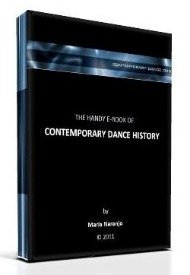Thoughts on dance improvisation by Louis Conrad
The extract below is from my book Actors in Action (not yet completed) and is the introduction to a workshop session on improvisation. Although primarily directed towards actor training, the basic principles also apply to dance.
STATE OF GRACE
In all arts there are moments of ecstasy, of heightened emotion and flowing excellence. We seem not to be aware of what is happening and feel that what we are doing is independent of the will. Athletes know this state of grace as ‘the zone’ where peak performance becomes effortless. Actors define it as their moment of magic during which they are at the apex of their creativity and spontaneity. These moments unfortunately, are not so common, but the actor in all his work will try to achieve a state of flow in which the creative impulse pushes him along into new and exciting territory.
It is this flow emanating from a subtle interaction between heart and head, between intuition and reason - with intuition more than often dominating - that allows the actor to invigorate the known and often done and also to explore uncharted areas of performance. To achieve both these objectives the actor uses improvisation which is itself a product of flow and a creator of it.
Not knowing what’s going to happen next but being acutely ready for it, existing fully in the absolute now of the present, listening, watching, reacting, initiating, and being totally receptive to on-going sounds, actions, images and changing relationships, is the essence of improvisation. It is not only a process of working but also a state of mind - a willingness to put aside preconceived concepts and open the mind and body to fresh ideas, new ways, original patterns.
Improvisation can be free-form in that it requires the barest of cues to set it in motion and take any direction it wishes, or it can have constraints, be guided, given sign-posts and used to explore a particular acting area. In relationship to an existing piece it can with the aid of parallel situations, changing locations, time moved forward or back or any other elements modified, provide a revitalised and creative surge. Improvisation is also a performance mode itself and can be a pre-step in creating new plays and materials.
Note to improvisers:
Though spontaneity is our obvious goal we should be careful not to denigrate the valuable resource of the conscious mind. Paradoxically even the most spontaneous of improvs has a built-in awareness factor; the dancer’s stored movement experiences of time, space, energy, symmetry and asymmetry etc; his muscle ’intelligence’, body shape, culture, emotions are all subconsciously referred to and influence his instantaneous movement decisions.
‘Double description’ is the term used in communication studies. We experience life using both our reasoning awareness and our intuitive understanding. We may give prominence to one or the other for a particular situation but both elements - whatever the ratio - are involved. When we meet somebody we are listening, speaking, observing consciously but at the same time we use the rich mine of our intuitive world to get a fuller picture of the person and our reactions to him. This double description of experience also applies to all our interactions with the material world and events.
Note by contemporary-dance.org:
(This text has been sent to contemporary-dance.org by Mr. Conrad after the publication of the article “Dance Improvisation by Dominik Borucki”, through our e-zine. The following stands as a reply that greatly contributes to the topic of thoughts on dance improvisation)
In addition to the suggestions in relation to skills and principles for better improvisation given by Mr Borucki in your interview I would just add:
A strong motivation – an exploration of the movement potential of a particular area of dance/movement study; a wishing to express; a self discovery process; a challenge of communication.
A rich experience of movement and dance both as a preparation and development process.
Feedback - willing to accept (or reject) able to interpret, ability to assess, the facility to absorb, adapt and utilise it in your work.
The development of a mind/intuitive integrated dual perceptual mechanism – the flexibility, willingness and capability of being able to plug into one, the other and both throughout the task in hand!
Louis Conrad
Actor, Dancer, Choreographer, Teacher.
9, avenue de la liberté
94220 CHARENTON-le-PONT
tél : 01 78 54 80 68
port : 06 71 97 41 19
E-mail : louis.conrad[at]hotmail.fr
(sent to contemporary-dance.org in July 2012).
Return from Dance Improvisation Louis Conrad to Dance Articles
The handy e-book of CONTEMPORARY DANCE HISTORY:
The Dance Thinker is our occasional E-zine. Fill in the form below to receive it for free and join us.
Read:
"The Dance Thinker"
BACK ISSUES
Post contemporary dance announcements (workshops, auditions, performances, meetings and important news... it is free.)



